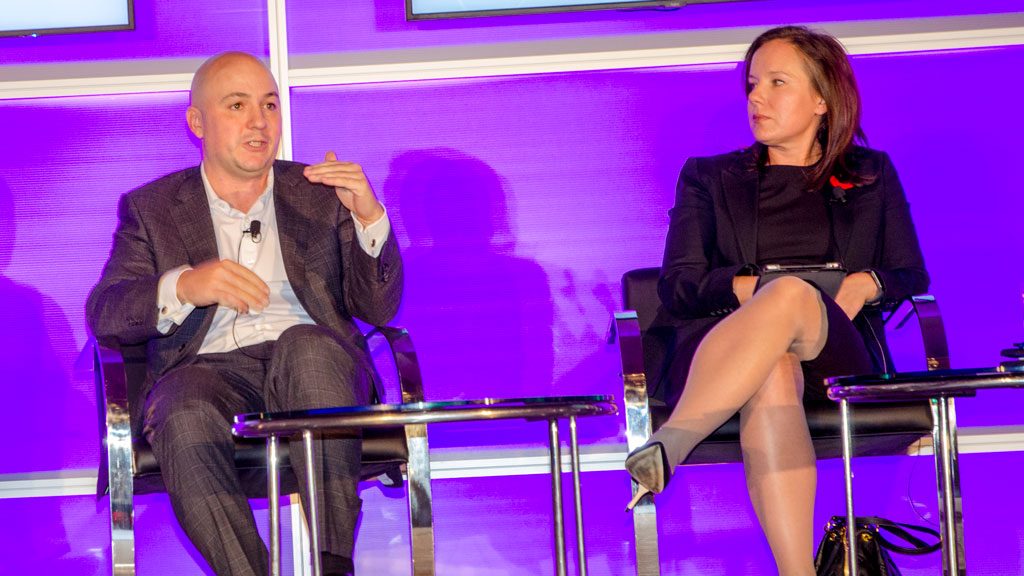How the parties involved in two public-private partnership (P3) hospital projects faced challenges and persevered was candidly discussed at a recent national P3 conference.
The breakout session, Back from the Brink: The Resiliency of the P3 Model, was part of the annual Canadian Council for Public-Private Partnerships conference held in Toronto.
Panellists focused on the Oakville-Trafalgar hospital project in Oakville, Ont. and the Milton District Hospital in Milton, Ont., both of which faced challenges just before or just after opening.
At the Oakville hospital, there was a loss of all access control in the building shortly before opening day, with thousands of doors and security controls affected. Furthermore, just a few months after the hospital opened, one of the dampers froze shut causing heating coils to blow, flooding 14,000 square feet of space.
In Milton, there were a series of smaller events that caused the accumulation of failure points, including problems with the help desk operator and failure in the sewer system of the building.
“We had a number of significant calamitous events in the building,” explained Bill Bailey, senior vice-president, redevelopment and facilities, Halton Healthcare Services.
“You can commission a building, you can do all the testing that you possibly want to undertake, but it’s the building itself, when you start running the building, that’s really going to tell you if there are some significant issues and they will reveal themselves to you.”
Instead of defaulting on the contract, the parties worked together to find a solution.
“As we encroached on the threshold of failure in the contract we took action together to intervene and developed a process together to rectify the situation. What that entailed is undertaking an operational review because we believe that a lot of the problems manifest themselves from work-related issues that couldn’t be perceived ahead of time,” said Bailey.
“I saw a whole spectrum of what can go wrong but I also saw what worked. You need to have a strong and capable owner side team to manage the project. They are complex, there are a lot of decisions. Once financial close is reached, the pace of the project cannot be underestimated.”
Angela Clayton, group head, buildings division with Plenary Group, which was responsible for the Milton hospital project, told delegates that post substantial completion, the consortium found itself in a situation where it was quickly accumulating failure points and reporting default.
“We had a decision to make — do we want to proceed with the default and get into a position where we are disputing with Halton Healthcare Services as to whether or not a default exists, or do we want to help them achieve their objective of getting the hospital to a point where it’s meeting operational requirements? We chose the latter,” said Clayton.
“We entered into an agreement and ultimately we are in a better position and created a strong relationship because of it.”
While overcoming challenges with these projects did work out in the end, going through the process was difficult at times, said Joey Comeau, senior vice-president of capital services with EllisDon Corporation. He spoke specifically about the flooding at the Oakville Hospital.
“With any flooding event, the period of time that it takes to remediate a flood and to get it back to the same level of availability as it would have been otherwise just requires time. In these contracts, you have a punitive contract — the clock was running and we were there trying to fix it,” he explained.
“We were able to quickly, in a very short period of time, identify what the cause of the problem was and make sure it wasn’t going to occur again. The actual fixing of the issue wasn’t necessarily the key challenge for us. The key challenge was more…we had incurred a number of failure points and essentially we had gone into default, where if the client had wanted to they were in a position where they could have put us into default on the entire contract.”
He agreed with other panellists the main challenge was resolving the issue, especially with so many parties involved.
“On one hand, we’re trying to make things right with our clients. On the other hand, we have all those other stakeholders that you have these open conversations with about their liability or their risk profiles changing or something else is changing in the nature of their contract,” said Comeau.
“Frankly, what we found interesting when this all happened is the actual fixing of the issue was a couple hundred of thousands of dollars but the final price tag was just short of $5 million. If that’s what the P3 market creates and talk about being on the brink, as you can imagine, it’s very difficult to go back to a position of profitability.”
Another challenge was the insolvency of Carillion PLC in the U.K., as Carillion Canada was part of the consortium on the project.
“We now had no one to point the finger at in terms of who was actually going to solve all these issues other than ourselves, regardless of if it was a construction defect issue, a service provider issue at the end of the day, because we took the position that we were 100 per cent liable,” said Comeau.
“There were a lot of the questions. What we really wanted to do was calm the market. I remember for a month consistently delivering the message ‘EllisDon is going to be there.’”











Recent Comments
comments for this post are closed